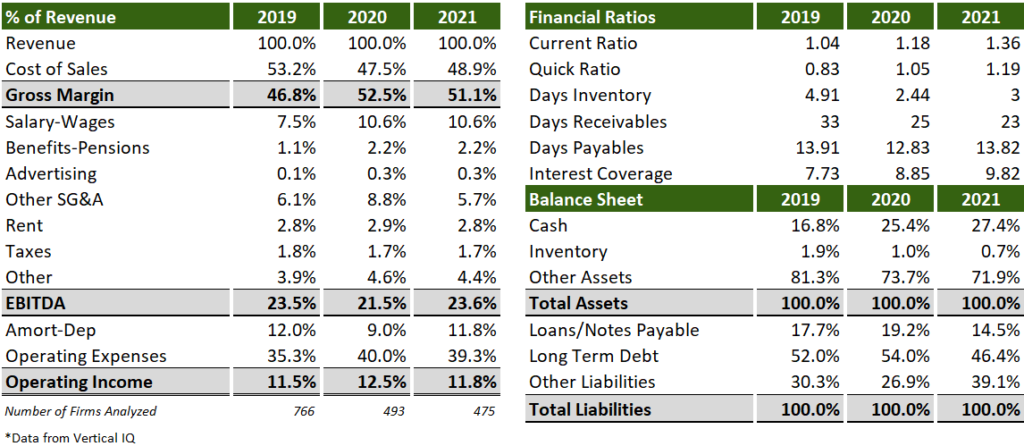What’s in this edition:
- News/Publications to follow
- Financial considerations for your Trucking Company business plan
- Industry metrics for guidelines
Public Information to Follow
- National Association of Small Trucking Companies
- Freightwaves
- American Transportation Research Institute
Financial Considerations for your Business Plan
Profit Drivers
Profitably Hauling Rates: Truckers need to make sure they charge enough for their hauling services to cover their costs and make a profit. Their costs include things like loan payments on the truck, insurance, license fees, office rent, and other overhead expenses. They also have to factor in variable costs like fuel, per mile truck maintenance costs, tolls, meals, lodging, and the driver’s salary. The amount that truckers charge for their services varies depending on the type of load and the freight lane covered. For example, a load of hazardous materials will typically cost more to haul than a load of furniture. And a load that’s going from coast to coast will cost more than a load that’s just going across town.
Accurate Load Planning: Trucking companies can increase their profits by making sure their trucks are always moving and loaded. This means avoiding “deadhead miles,” which is when a truck drives back empty to its base location. Companies can do this by planning their routes carefully and ensuring that there are return loads available. They also need to comply with Hours of Service regulations, which limit the amount of time drivers can be on the road. Companies can also focus on specific freight lanes for business development. This means identifying lanes that have a lot of demand for trucking services. By focusing on these lanes, companies can optimize their load scheduling and improve their profitability. Larger companies typically use load planning software systems to assist in assigning drivers to routes. These systems can help companies to find the most efficient routes and to minimize idle time.
Cash Management Challenges
Collecting Payments. Trucking companies usually don’t get paid until they deliver the goods. This means they have to pay for the fuel, insurance, and other expenses out of pocket, which can put a strain on their cash flow. A lot of truckers don’t have the staff or resources to do all the paperwork and follow-up needed to collect payments from customers. They might also be worried about damaging their relationships with customers if they’re too aggressive about collecting payments. That’s why some truckers sell their receivables to a freight factoring company. This means the factoring company will pay the trucker upfront for the invoice, and then they’ll go after the customer for payment. This can free up the trucker’s cash flow so they can keep their trucks on the road.
Variable Operating Costs. The cost of delivering a load can be a moving target. It depends on a bunch of factors, like fuel prices, the length of the trip, the type of load, traffic conditions, and delivery requirements. Truckers need to be on top of their costs so they can make sure they’re making a profit on each job. And they need to be able to adjust their rates as needed, if fuel prices go up or something else changes.
Truck Utilization: Trucks are expensive assets, and companies have to pay for them even when they’re not being used. This includes things like loan payments, insurance, and licensing fees. So any time a truck is sitting idle, it’s costing the company money. This can happen for a number of reasons. Maybe the truck is waiting for a load, or maybe the driver has exceeded their Hours of Service. Whatever the reason, idle time is lost revenue. Another way that trucks can represent lost revenue is when they have to drive back empty. This happens when a truck delivers a load to one location, and then has to drive back to its base or to the next delivery pickup. During that time, the truck isn’t generating any revenue. Companies can reduce lost revenue by minimizing idle time and empty miles. This means finding ways to keep trucks moving and loaded as much as possible.
Potential equipment purchases could include:
- Truck: $70k – $150k+ Depending on the type of truck and if used or new.
- Electronic Onboard Recorder (EOBR) $1k – $3k Tracks driver performance for compliance with federal regulations and optimization of fuel efficiency.
Recent Industry Metrics (Companies <$5M revenue)

Highlights from this vertical analysis and financial ratios:
- Cash balances grew post pandemic.
- Companies were able to shorten collection days from customers.
- Based on the increased producer price index, companies were able to transfer much of the increased costs to customers.
If you liked this, subscribe to my newsletter below!
For more information on building financial models see here.
Please contact me here if you found this useful or want more information.

